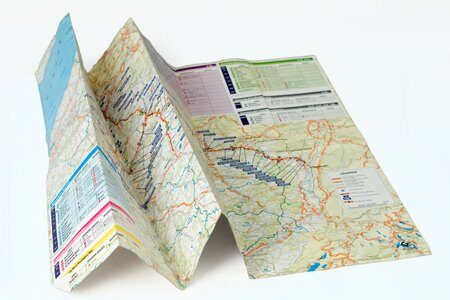By the Dodge Program Staff

(Part one of a three-part series)
Here we go again. We’ve brought you thought leaders on the themes of creativity and sustainability in three previous blog posts:
Go Fish…Within the Carrying Capacity
Peering Out and Peering In As We Revise Grant Guidelines
Thinking About Philanthropy and Sustainability
Now we want to bring you the voice of our grantees (thought and practice leaders in their own right). We collected these voices through a series of essay questions that ranged from defining creativity and sustainability to thinking about systems-thinking, connections, values, design and “Big Hairy Audacious Goals” (BHAGs).
Starting today and for the next two Mondays, we will provide you with a glimpse of how some key arts, education, environment and place-based nonprofit organizations responded to the central question of how the themes of creativity and sustainability relate to each other. As a foundation staff, we are considering these stimulating, seasoned and (at times) provocative answers as we frame a set of guidelines and philanthropic strategies that will have as powerful and positive an impact as possible.
Of the nearly 40 responses we received, we identified several orientations that described the relationship between creativity and sustainability. Today we explore with you the following orientation:
There must be a social environment that can sustain creativity.
An arts organization director noted that “We need to recognize that creative ideas are fragile and seldom fit into a prescribed timeframe. We must give people, especially children, the ability to question and test assumptions, wherever possible…In short, we need time for exploration, daydreaming, trial and error.” This notion was bolstered by a cutting-edge education leader who asserted that creating an environment that can sustain creativity is essential because the flight or fight mechanism closes down critical and creative thinking.
Another arts executive director pointed to Richard Florida’s body of work on the “Creative Class” and added that “creativity requires a supportive environment and that because it is inherently a social process, not just individual and requiring forms of organization, the elements of organization can and frequently do stifle creativity.” Then a young, emerging environmental organization director pointed back to critical passage from the State of the World 2001 report which said that “Human change is distinguished from natural change by its willfulness and purposefulness. As the only creature known to plan change, we boldly alter the course of our own development – As a consequence, the cultural evolution driven by human interventions is now a more powerful determinant of our fate than biological evolution is.”
We also asked whether people had examples of the relationship between creativity and sustainability in action. Under this “bucket” of responses we heard about a paradigm shift that a theater director had while attending an intense two-week workshop at Columbia University. The experience has her embracing the “creation of a resident or community-based company and discarding the earlier practice of casting and rehearsing out of New York City – a business model that has been in place for 23 years” as the best way to sustain the theater company (on every level) in the years ahead.
In addition, a key arts advocate informed us about the Massachusetts Creative Economy Initiative, which includes a State Business Development position entitled, Creative Economy Industry Director. In addition, the Creative Economy Council reports annually to the State Legislature on the best policies to support the growth of the Creative Economy
She also told us about Heartland LLC in Seattle and the company’s interests in integrating cultural investment as part of its real estate services. She reported that “they see cultural investment as supporting social goals by maximizing public benefit through coalitions with other interested industries such as parks, affordable housing, schools, workforce development and sustainability. Their view is that since arts and culture are naturally in every community, they are an essential component to any district or development strategy and they can support, amplify and integrate with other strategies across industries and social objectives.”
And let’s not forget the “Gen Y” voice that lives in the world of virtual and face-to-face connections. A young spirited arts program staff person offered this reflection: I think people are starting to crave human interaction again. We’ve engineered new technologies to allow us to do that across great distances (texting, Facebook, Twitter, etc.) but ultimately it boils down to feeling connected. To get people to support sustainability, I think we need to show them how they can be a creative part of bringing sustainability about. Trends are showing what I already know to be true for myself: Gen Yers want to work for/be affiliated with companies/groups that are in line with their life philosophy. I think what is key in helping me be passionate about the work I do, and how I spend my free time, is understanding the big picture. If I’m coming to something new, I look for someone to connect the dots for me – to show me not only why, but how what I’m doing links to what folks at the top of the ladder are doing. It’s those moments of understanding that I am an integral part of something, that I belong and my presence matters that spurs me to support the cause. I think it’s imperative when we discuss creativity and sustainability, and how to get people involved in supporting and fostering both, that we connect the dots and show them, to speak metaphorically, the “You are here” inset map, and then where they fit into the full scale map.
If this orientation to creativity & sustainability (There must be a social environment that can sustain creativity) resonates with you, please send us your thought and examples. And tune in next Monday as we bring you voices from the orientation “creativity = sustainability.”
Related recommended reading: Building a Movement—a Manifesto.
Are you on Twitter? Dodge wants to connect with you. Follow us @grdodge.
